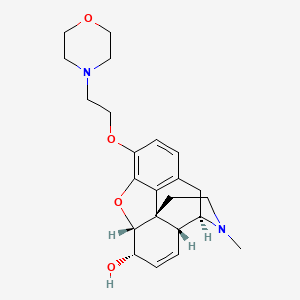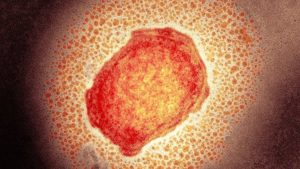Pholcodine: Total Recall

In the realm of drama and theatre, a callback is most definitely a positive sign. It means an individual was able to pull off a character well enough to be given a second chance to clinch that particular role (I hope you’re all thinking of HSM now). Unfortunately, the same cannot be said with the “callback” going on with all the Pholcodine containing products in our country.
A recall, the pharmaceutical equivalent of a callback spells the opposite. It indicates that there is a fault in the product or it causes some unwanted reaction when consumed, to the point that it has to be recalled in order to prevent further harm to the consumers. As you’re reading this, most (if not all) of the products containing Pholcodine have been recalled as the Drug Control Authority (DCA) have deemed them as unsafe for users. Before we delve into the details of why it poses a safety risk, let us look into Pholcodine.
Pholcodine
Pholcodine, an opioid cough suppressant, is pharmacologically categorised as an antitussive. Its principal mechanism in subduing a cough is by partly acting on the cough centre in the Central Nervous System (CNS), specifically the medulla. This acts to depress the cough reflex an individual might experience [1].
In Malaysia, Pholcodine is a Group C item which means that it can be sold and dispensed only after having a written entry in the Prescription Book [2]. Currently, there are 14 registered products containing Pholcodine under the DCA in our country (Figure 1). Found in the form of lozenges and oral liquids, they are normally indicated for unproductive and irritating coughs. These are the kind of coughs that often accompany common colds, influenza, sinusitis and upper respiratory tract infections in adults and children of and above two years of age [1].
So, all of this sounds pretty basic right? Good ol’ Pholcodine coming to the rescue of an ailing person with a dry cough. Nothing more, nothing less.

So, why the recall?
The thing is, patients who took Pholcodine in the past 12 months and have taken Neuromuscular Blocking Agents (NMBA) as part of any general anesthetic procedure, were found to have a higher risk of anaphylaxis. This means they experience serious, life-threatening allergic reactions within a short period of exposure to the NMBA [3].

NMBAs are used as muscle relaxants during general anaesthesia. We currently have five NMBA products registered with the DCA, namely atracurium, cisatracurium, mivacurium and suxamethonium [3]. They are often incriminated as the culprit in the IgE-mediated anaphylaxis during anaesthesia which results in perioperative morbidity and mortality. Studies have hypothesised that the main allergenic determinant of NMBAs are the substituted ammonium ions that they share, particularly the quaternary ammonium ions.
However, the likes of over-the-counter medications, prescription drugs and common household chemicals such as the quaternary ammonium disinfectants also home substituted ammonium ions in their chemical structure. And you guessed it right, Pholcodine does indeed contain a tertiary ammonium ion [4].
To cement this act of recall, review of all evidence, ranging from post-marketing safety data and information from healthcare professionals, including that of the “Allergy to Neuromuscular Blocking Agents and Pholcodine Exposure” (ALPHO) study showed that use of Pholcodine in the 12 months preceding a general anaesthesia is associated with the risk of anaphylaxis. Having found that the task of identifying a special population in whom Pholcodine exhibits greater risks than benefits is unfeasible, it was deemed by the Pharmacovigilance Risk Assessment Committee (PRAC) of the European Medicines Agency (EMA) that the best option to assuage this risk was to withdraw Pholcodine-containing products from the pharmaceutical market.
Following that, a case-control study published in 2021 in Western Australia set out to identify whether risk of NMBA anaphylaxis was attributed to obesity regardless of the consumption of Pholcodine. From 2012 till 2020, 145 patients with intraoperative NMBA anaphylaxis were compared with regards to their BMI grade, history of pholcodine consumptions, age, sex, comorbidity as well as type and dose of NMBA. The collective conclusion was that obesity and pholcodine consumption are undoubtedly a risk factor of anaphylaxis [5].
While the relationship between these two are constantly under study, it still remains elusive as to why and how Pholcodine is able to elicit a hypersensitivity reaction against NMBAs and whether there are other agents that can evoke a similar hypersensitivity reaction. However, both the ALPHO study and the case-control study in Australia prove that the substituted ammonium ions in Pholcodine and NMBAs cross-react and thus, prime the IgE-mediated allergic reaction to NMBAs.
With that, it comes as no surprise when the decision to recall Pholcodine products and its cancellation has made its way around the European Union (EU), United Kingdom, Australia, France, Norway and eventually made its way to us here, in Malaysia.
The reports involving Pholcodine
Health director-general Tan Sri Dr Noor Hisham Abdullah mentioned during the press release that a whopping total of 852 cases of adverse effects related to use of Pholcodine were reported by the World Health Organization (WHO). 42 and 20 reports out of that were of an anaphylactic reaction and anaphylactic shock respectively [6].
In our homeland, there were 12 reports received by the NPRA, with 17 adverse events suspected to be related to Pholcodine-containing products. Thankfully, there have been no local reporting of Pholcodine-induced anaphylactic reactions thus far.
On the flipside, the NPRA received 204 reports with 316 adverse events suspected related to the NMBA products registered in our country. The reports included anaphylactic shock, anaphylactic reaction as well as anaphylaxis although, it was unknown whether the patients had history of exposure to Pholcodine-containing products nor did these cases explicitly state that Pholcodine is a concomitant ot co-suspected drug in these instances [3].
What to do next?
As previously mentioned, the risks far outweigh the benefits of using Pholcodine-containing products and the NPRA have done their fair share of examining this safety issue as it is. Thus, the subsequent announcement by the DCA for immediate cancellation of the registration for Pholcodine-containing products. The recall is being done not only to manufacturers and suppliers but also extends to the level of the consumers/end-users.
So, if you are currently taking any products with Pholcodine in it, we implore you to stop immediately and refer to your doctor or pharmacist for an alternative option. As a healthcare professional ourselves, we should advise patients to consider other treatment options that exclude Pholcodine. On the other hand, if you have consumed Pholcodine-containing products recently, it would be wise to inform your healthcare professional especially if there are plans of general anesthesia on the table. Stay alert and safe everyone!
References
- www.mims.com. (n.d.). Pholcodine: Indication, Dosage, Side Effect, Precaution | MIMS Malaysia. [online] Available at: https://www.mims.com/malaysia/drug/info/pholcodine?mtype=generic.
- FIRST SCHEDULE POISONS LIST [Section 2]. (n.d.). Available at: https://www.pharmacy.gov.my/v2/sites/default/files/document-upload/poisons-list-1.9.2020_2.pdf [Accessed 31 Mar. 31AD].
- Mei, C.S. (2023). [Updated] Pholcodine: Risk of Anaphylaxis to Neuromuscular Blocking Agents (NMBAs). [online] npra.gov.my. Available at: https://npra.gov.my/index.php/en/component/content/article/449-english/safety-alerts-main/safety-alerts-2023/1527471-pholcodine-risk-of-anaphylaxis-to-neuromuscular-blocking-agents-nmbas.html?Itemid=1391#:~:text=The%20NPRA%20has%20completed%20a [Accessed 31 Mar. 2023].
- Brusch, A.M., Clarke, R.C., Platt, P.R. and Phillips, E.J. (2014). Exploring the link between pholcodine exposure and neuromuscular blocking agent anaphylaxis. British Journal of Clinical Pharmacology, [online] 78(1), pp.14–23. doi:https://doi.org/10.1111/bcp.12290.
- Sadleir, P.H.M., Clarke, R.C., Goddard, C.E., Day, C., Weightman, W., Middleditch, A. and Platt, P.R. (2021). Relationship of perioperative anaphylaxis to neuromuscular blocking agents, obesity, and pholcodine consumption: a case-control study. British Journal of Anaesthesia, [online] 126(5), pp.940–948. doi:https://doi.org/10.1016/j.bja.2020.12.018.
- nst.com.my. (2023). Health Ministry cancels, recalls products with pholcodine. [online] Available at: https://www.nst.com.my/news/nation/2023/03/892102/health-ministry-cancels-recalls-products-pholcodine.













